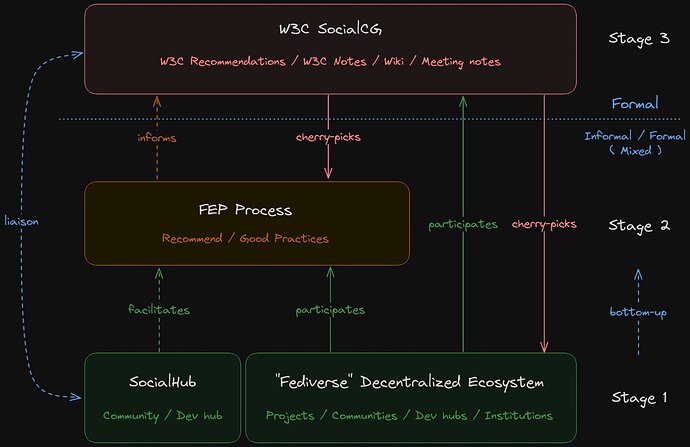Further clarifying 3-stage Standards Process
In FEP Process - Clarity on positioning: open and inclusive - #8 I collected feedback on the FEP process. The way I picture the FEP Process’ role as the 2nd-stage in a 3-stage standards process is:
- Just one way how things from the ecosystem permeate bottom-up to further standardization.
- The FEP process need not be used. Entirely optional.
- Ecosystem can directly participate with W3C.
- Ecosystem can define their own practices & standards (think e.g. ForgeFed)
- FEP’s can be:
- informative (ideas, good practices)
- specialized (domain-specific)
- recommended practices (when well-defined, tested, implemented)
- FEP’s are a handy way to:
- inform the decentralized ecosystem (“where I can find common/popular ways of doing things”)
- inform the W3C on what to cherry-pick for further adoption (likely recommended practices)
- SocialHub merely facilitates. SocialHub is just a community, part of the ecosystem.
- Task of FEP editors is to minimize gatekeeping.
- Editors are responsible for process, not content.
- SocialHub liaisons with W3C.
- Bottom-up. How can we help W3C evolve the standards? Inform by the FEP + discussions.
- Top-down. How can we help W3C open standards adoption? Follow-up to W3C activity.
All this depicted in the following diagram:
(Note: Excalidraw diagram definition is included, picture can be opened/edited in the UI)
@codenamedmitri @eprodrom your feedback would be much appreciated from the perspective of W3C.
